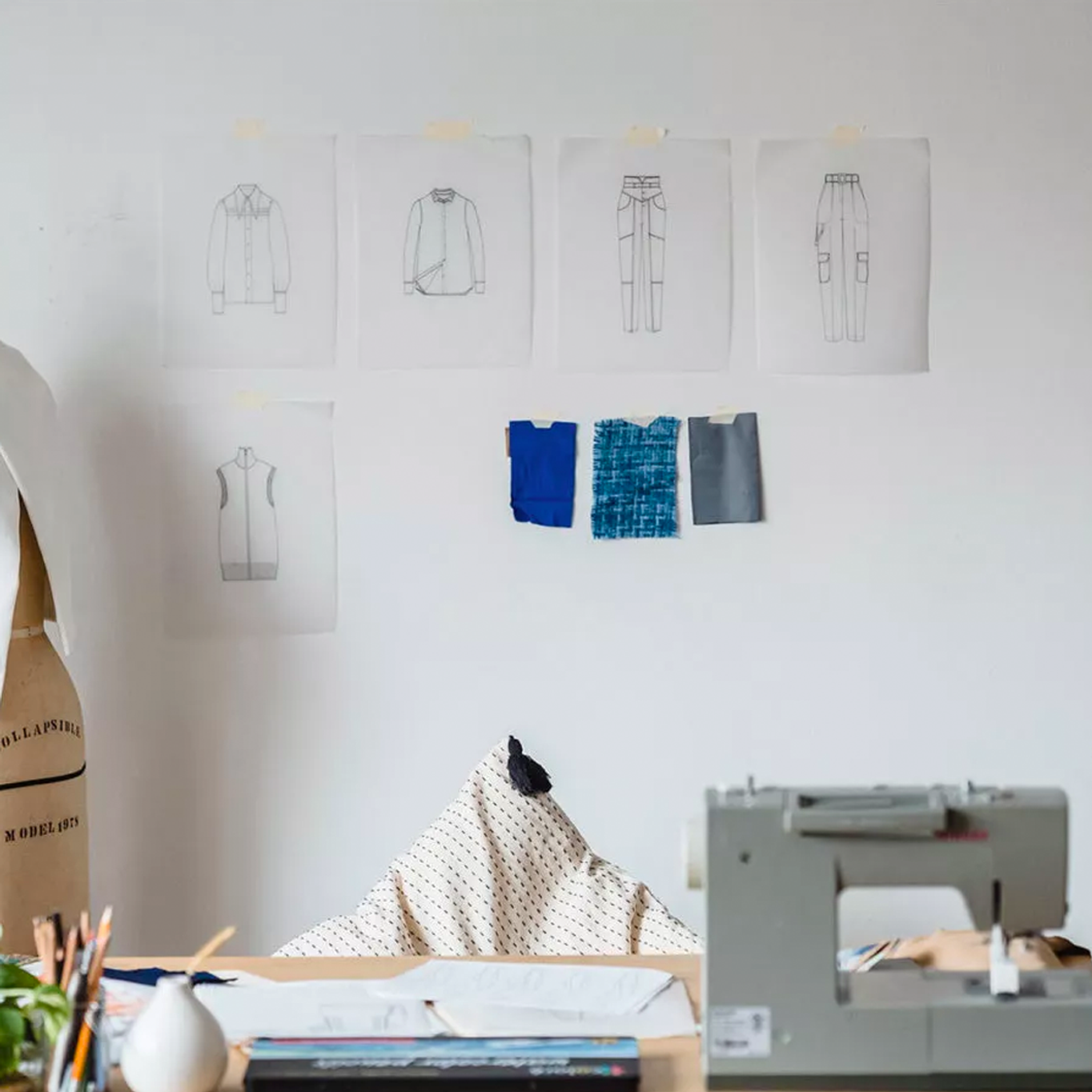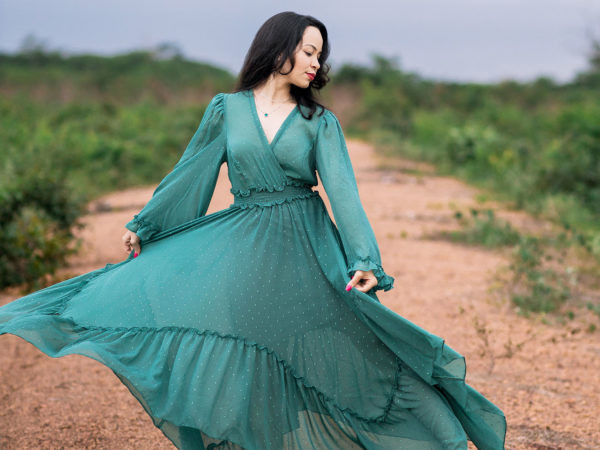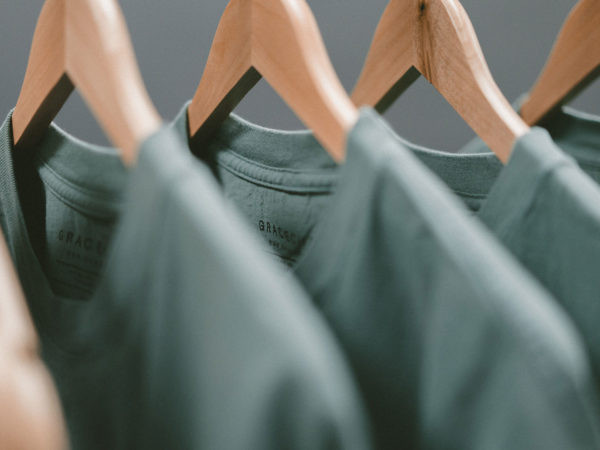
Introduction:
Have you ever wondered how to use interfacing and which one to choose?
We’re here to help you out!
Interfacing is a term you may have come across when reading sewing patterns or shopping in your favourite shopping stores. So what is it and why is it used?
Interfacing is a fabric that is used to make certain areas of a garment more stable. It is used as an additional layer of fabric inside garments to achieve extra stability. It is commonly used in parts of a garment such as collars, cuffs, waistbands and pockets.
It is also used commonly in projects such as bags, pouches, and wallets to provide extra stability and to add firmness to these projects.
There are many different types of interfacing on the market today, and for beginner sewists, this can be a little confusing. To break it down, there are two main types of interfacing which are fusible or sew-in. In addition to this, there are three main weave types which are woven, non-woven, and knit.
We’re going to cover the best applications for the main types of interfacing that can be found so you can decide which one works best for your project!

Types of Interfacing:
Fusible Interfacing:
Fusible interfacing has small glue dots on one side. When the interfacing is heated with an iron the dots melt and permanently fuses the interfacing to your fashion fabric. As this is a permanent fusion, it is important to take care when placing and preparing it before fusing it to your project.
Fusible interfacing will aid in keeping your garments crisp through laundering and wearing.
If you are unsure of the result, try making up a test swatch to see the outcome before proceeding with your project.
How to use:
- Cut interfacing using your pattern as a reference, but do not include seam allowances. This will remove any uncesseary bulk in the seams.
- Place interfacing, adhesive side down (the side with the small glue dots), on the wrong side of your fabric.
- Cover with a damp pressing cloth
- Use a SINGER Iron on a warm setting and press (don’t iron) one section for approx 15 seconds. Lift and repeat until your entire piece of interfacing has been fused.
Sew-in Interfacing:
Sew-in interfacing is a great way to give your project structure. It is sewn to the fabric, rather than fused. It is available in many fibers from polyester and cotton - and it also comes in a variety of weights. Pick a weight of sew-in interfacing that most closely resembles the weight of your fashion fabric.
There are six types of sew-in interfacings available: Organza, Cotton batiste, Light to medium weight woven interfacing, thick non-woven interfacing and hair canvas.
Sew-in interfacing is great for use on open-weave fabric, sheer fabric, textured fabric, heat-sensitive fabric and tailored jackets!
How to use:
- Cut your sew-in interfacing using your pattern pieces as a reference, but do not include the seam allowances on your interfacing. This will remove any unnecessary bulk in the seams.
- Either hand or machine baste the interfacing to the wrong side of the fabric, next to your seam line within the seam allowance.
- Trim any interfacing that is going past your seam line.

Woven Interfacing:
Woven interfacing is a fabric that is often used in the fashion industry to add structure and stability to fashion fabrics. It is often cut to the same size of cuffs, collars and other areas of a garment that requires more stability minus the seam allowance to avoid bulk in the seams.
This type of interfacing creates movement and it usually maintains the drape of the fashion fabric it is attached to. In addition to this, it has a distinct grain, so this needs to be taken into account when cutting it. Woven interfacing can fray, therefore when using this care needs to be taken when cutting, sewing, and finishing.
Non-Woven Interfacing:
Non-woven interfacing is a great option for a lot of projects, but you need to be aware of its limitations. It is bonded and has a texture that resembles paper. It doesn’t have a grain, therefore it can be cut in any direction and won’t fray. However non-woven interfacing doesn’t provide the same movement and drape as a woven interfacing, so avoid using this in projects where drape and movement is important.
Tip: A fleecy non-woven interfacing is great to use in craft projects, where you want to achieve a lofty and soft effect.
Knit Interfacing:
Knit interfacing is most commonly used to keep knit fabrics from stretching out of shape. It has some stretch along the crosswise grain but minimal stretch along the lengthwise grain.
When using this type of interfacing you will need to be mindful about what areas of your project need the most stretch and apply the interfacing accordingly, so you don’t lose the stretch in your knit fabric where it is most needed.

Conclusion:
In order to achieve a professional, crisp look in your projects whether it is a garment or bag, the use of interfacing is an integral component to include.
When you are working on a project and you need to choose the right interfacing, it’s important to consider the weight of your fabric. If you want to add stiffness to your garment go with a heavier-weight interfacing.
It is also important to consider the colour and type of interfacing, Choosing an interfacing that most closely resembles your fashion fabric will ensure the best result.
The use of interfacing in your projects, is a step not to be glossed over, as it significantly impacts on the finished look of your garment or project. Without the use of interfacing your project will look homemade not very professional and it will sag and wrinkle in places that you don’t want this to happen. Adding interfacing is a necessary step to level up your projects, and to achieve a professional and crisp look in your finished projects.
Go forth, with this knowledge and create beautiful, structured garments bags or any other projects, that will last through laundering and everyday wear!
As always, we would love to see what you are up to. Tag us @singersewinganz or use hashtag #sewitwithsinger so we can see what you have been creating!
